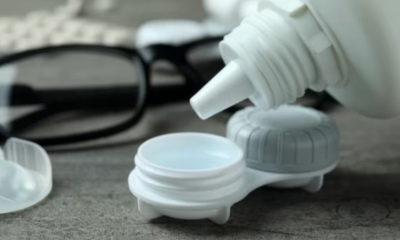So grab a seat and prepare to be amazed as we dive. From moisturizing miracles to luscious locks and delectable dishes – this multifaceted ingredient has got it all covered. Get ready to unlock the secrets of radiant skin, silky-smooth tresses, and mouthwatering culinary creations that will leave you wanting more. Let’s explore together why oil is truly nature’s gift worth celebrating!
The Nutrients and Properties of Almond Oil
Almond oil is not only a delicious ingredient in cooking, but it also boasts numerous benefits for our skin and hair. Packed with essential nutrients and properties, almond oil is truly a versatile powerhouse.
One of the key nutrients found in almond oil is vitamin E. This powerful antioxidant helps to moisturize and nourish the skin, keeping it supple and hydrated. It also contains fatty acids that help to lock in moisture, making it an excellent choice for those with dry or sensitive skin.
In addition to its moisturizing properties,it has anti-aging benefits as well. It can help reduce the appearance of fine lines and wrinkles by promoting collagen production. The vitamin E present in almond oil helps protect against environmental damage and free radicals, keeping your skin looking youthful and radiant.
For those struggling with acne-prone skin, almond oil can be a game-changer. Its non-comedogenic nature means that it won’t clog pores or exacerbate breakouts. Instead, it works to balance sebum production while soothing inflammation and redness.
When it comes to hair care, almond oil works wonders too! Rich in vitamins A, B1, B6, and E along with omega-3 fatty acids, this natural elixir strengthens the hair shafts from within while nourishing the scalp. It promotes healthy hair growth by stimulating blood circulation to the follicles.
Not just limited to skincare purposes alone; almond oil shines when used for culinary delights too! As a healthier alternative to traditional cooking oils high in saturated fats like butter or vegetable oils – using pure cold-pressed organic almond oil can add nutrition without compromising on taste!
The versatility of almond oil extends beyond frying or sautéing – you can use it as a base for salad dressings or even drizzle some over roasted vegetables before serving for added flavor complexity.
Next time you have some spare almonds lying around – consider extracting their precious oil to enjoy the multitude of benefits it offers for both your skin, hair,
Benefits for Skin: Moisturizing, Anti-Aging, and Acne-Fighting
When it comes to skincare, we all want products that can deliver multiple benefits. That’s where almond oil comes in! This versatile oil is packed with nutrients and properties that can do wonders for your skin.
One of the biggest advantages of almond oil is its moisturizing effect. It has a rich texture that deeply nourishes the skin, leaving it soft and supple. Say goodbye to dryness and hello to a radiant complexion!
But that’s not all – almond oil also has powerful anti-aging properties. It contains antioxidants like vitamin E, which help fight free radicals and protect the skin from premature aging. Regular use of almond oil can reduce the appearance of fine lines, wrinkles, and age spots.
If you struggle with acne or breakouts, almond oil might be your new best friend. Its antibacterial properties can help prevent bacteria buildup on the skin, reducing the risk of pimples and inflammation. Plus, its non-comedogenic nature means it won’t clog pores or cause further breakouts.
In addition to these specific benefits, using almond oil as part of your skincare routine can improve overall skin health. Its gentle yet effective formula makes it suitable for all skin types – whether you have dry, oily, sensitive or combination skin.
So why not give almond oil a try? Your skin will thank you for it!
Benefits for Hair: Strengthening, Nourishing, and Promoting Growth
When it comes to our hair, we all want it to be strong, healthy, and luscious. That’s where almond oil comes in! Not only is it a natural ingredient with numerous benefits for the skin, but it also works wonders for our precious locks.
One of the key advantages of using almond oil on your hair is its ability to strengthen the strands from root to tip. It contains essential nutrients like vitamin E that nourish and protect the hair follicles, preventing breakage and split ends. By regularly applying almond oil to your scalp and massaging it in gently, you can promote healthier hair growth while reducing damage caused by styling tools or
environmental factors.
In addition to strengthening your tresses, almond oil also provides deep nourishment. Its rich composition helps moisturize dry and damaged hair strands, leaving them soft and silky smooth. This natural emollient seals in moisture without weighing down your locks or making them greasy – a perfect solution for those with fine or oily hair types!
Furthermore, if you’re looking to boost the growth of your mane naturally, almond’oil can help stimulate those dormant follicles into action! Its high content of omega fatty acids penetrates deeply into the scalp, promoting blood circulation which encourages new hair growth. With regular use of almond’oil as part of your hair care routine, you may notice thicker and longer locks over time.
To reap these benefits for your precious strands:
Warm up some almond oil slightly
Massage it into your scalp using circular motions
Leave it on overnight or for at least 30 minutes before rinsing off with a gentle shampoo
So why not give this natural elixir a try? Your hair will thank you later!
Benefits for Cooking: Healthier Alternative, Versatile Uses, and Delicious Flavor
When it comes to cooking, almond’oil is a game-changer. Not only does it offer a healthier alternative to other cooking oils, but it also adds a delicious flavor to your dishes.
One of the biggest benefits of using almond’oil in your cooking is its health properties. It contains monounsaturated fats that are good for your heart and can help lower bad cholesterol levels. Plus, it has a high smoke point which means you can use it for frying without worrying about harmful compounds being released.
But almond oil isn’t just limited to frying! Its versatility makes it perfect for all kinds of culinary creations. Use it in salad dressings for an extra nutty kick or drizzle over roasted vegetables to enhance their natural flavors.
Beyond its health benefits and versatility, almond’oil brings a delightful flavor profile to your dishes. Its subtle nuttiness adds depth and richness that can take any recipe from ordinary to extraordinary.
So why not give almond’oil a try in your next kitchen adventure? Your taste buds will thank you!
How to Use Almond Oil in Your Skincare Routine
Almond oil is not only a delicious, but it also offers numerous benefits for your skin. Incorporating almond’oil into your skincare routine can help moisturize, nourish, and rejuvenate your skin.
To use almond’oil in your skincare routine, start by cleansing your face thoroughly with a gentle cleanser. After patting dry, apply a few drops of almond’oil onto your fingertips and gently massage it onto your face in circular motions. This will help the oil absorb into the deeper layers of the skin.
Almond’oil can also be used as an effective makeup remover. Simply soak a cotton pad with some almond’oil and gently wipe away any traces of makeup from your face.
For extra hydration and nourishment, you can mix a few drops of almond’oil with your favorite moisturizer or serum. This will enhance their effectiveness and leave you with soft and supple skin.
In addition to facial care, almond’oil can also be used on other parts of the body that need extra attention such as dry elbows or cracked heels. Massage a small amount of almond’oil onto these areas daily to keep them smooth and hydrated.
Remember that everyone’s skin is unique, so it’s important to do a patch test before using almond’oil all over the face or body. Apply a small amount on an inconspicuous area like the inside of the wrist and wait 24 hours to check for any allergic reactions or irritation.
With its versatile uses in skincare routines, incorporating almond’oil into yours is definitely worth considering!
Tips for Using Almond Oil in Cooking
Use as a salad dressing:
Almond’oil can be drizzled over salads to add a nutty flavor and enhance the taste of fresh ingredients.
Substitute for butter or vegetable oil:
When baking or cooking, you can replace butter or vegetable oil with almond’oil for a healthier option without compromising on flavor.
Enhance your stir-fries:
Add a splash of almond oil while preparing stir-fried vegetables or meats to give them an extra boost of richness and depth.
Roast vegetables to perfection:
Coat your favorite veggies with almond’oil before roasting them in the oven. This will help retain moisture and create crispy edges that are simply irresistible.
Make homemade granola bars:
Use almond’oil as a binding agent when making homemade granola bars. It adds moisture and helps hold all the ingredients together for deliciously chewy treats.
Create flavorful marinades:
Mix almond’oil with herbs, spices, and citrus juice to create delicious marinades for meats, poultry, or tofu. Let them soak up the flavors before grilling or baking.
Drizzle over pasta dishes:
To add richness and flavor to pasta dishes, toss cooked noodles with a little bit of almond oil along with your choice of sauce.
Blend into smoothies:
For an extra dose of healthy fats, incorporate almond’oil into your morning smoothies by blending it with fruits, vegetables, yogurt, or protein powders.



















